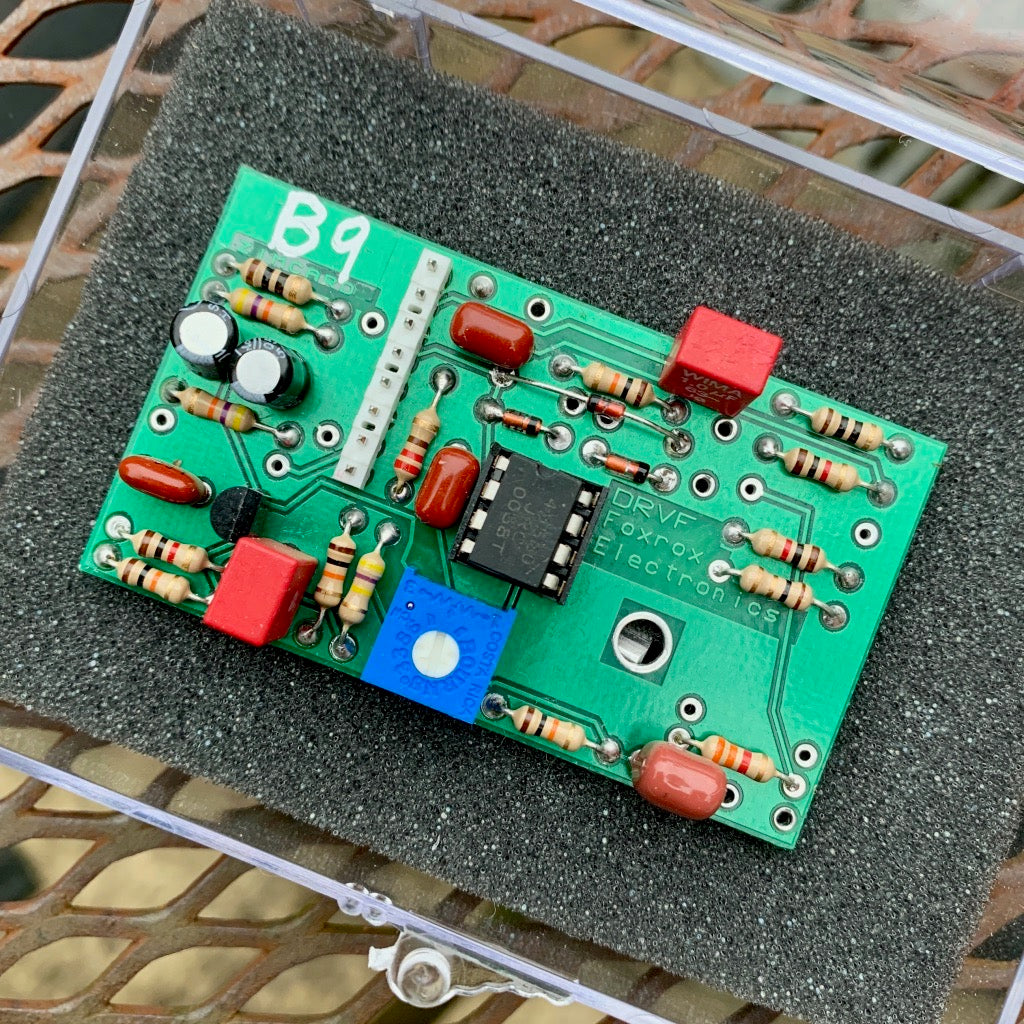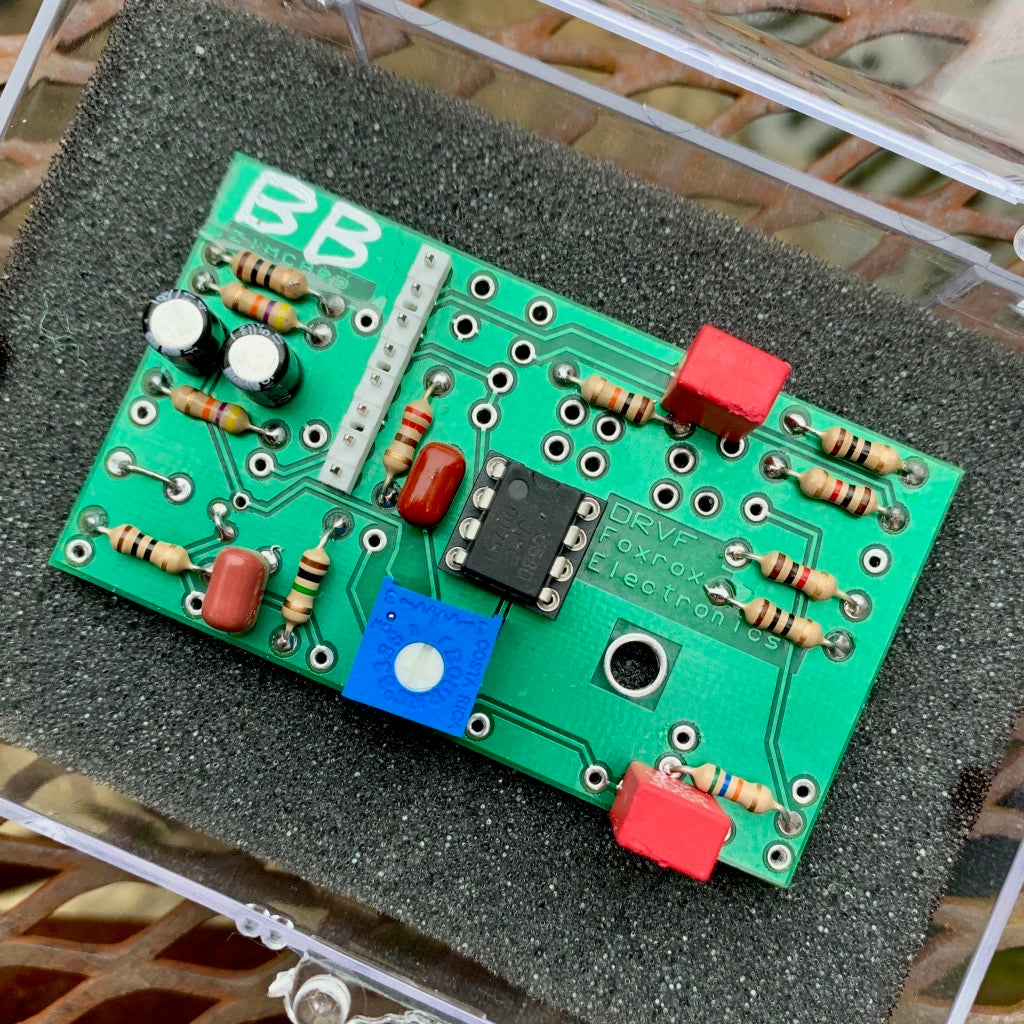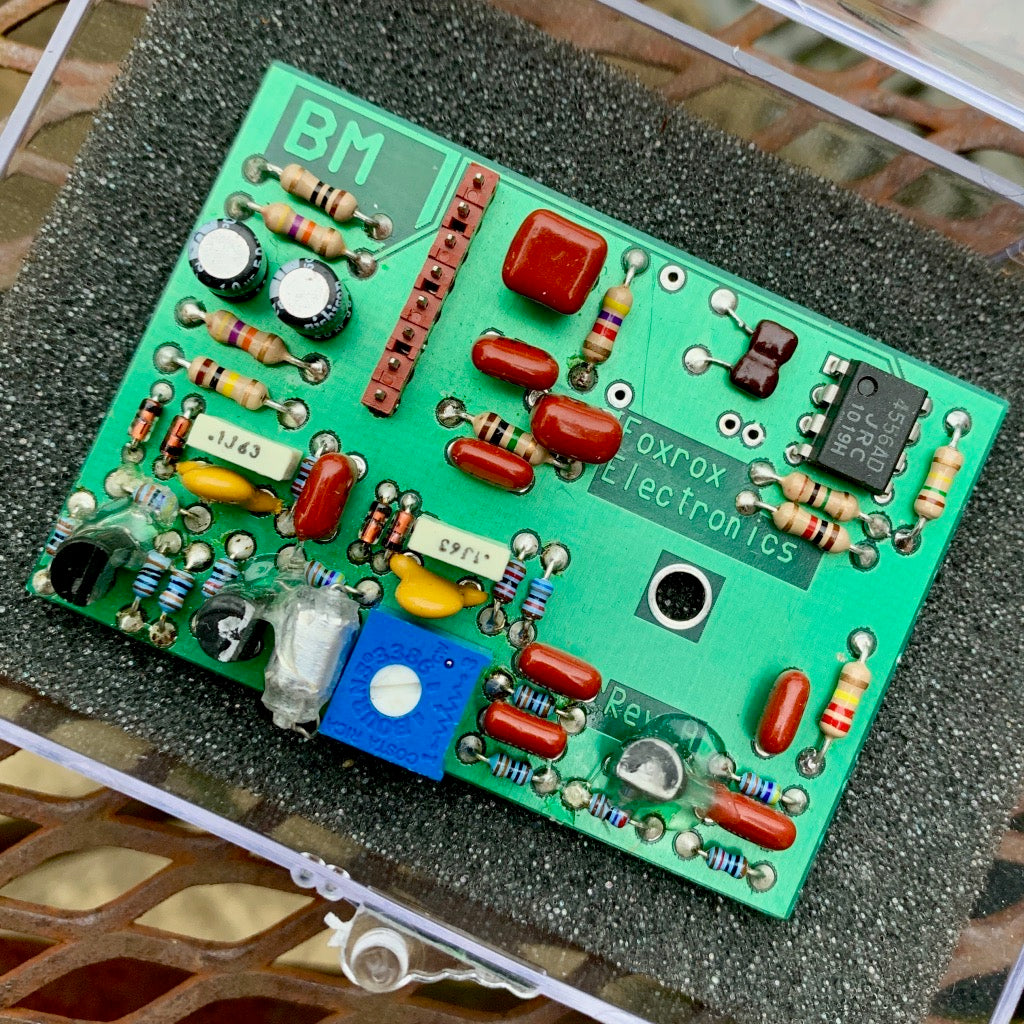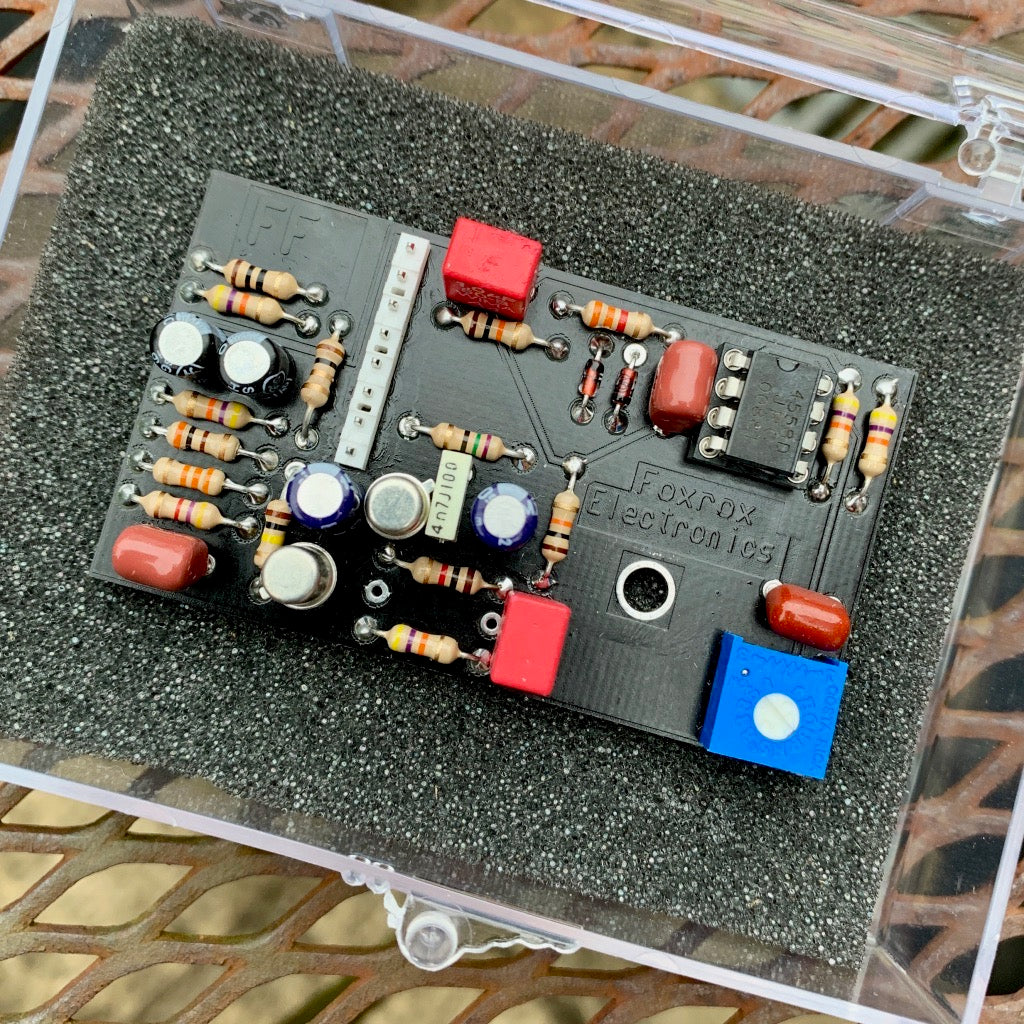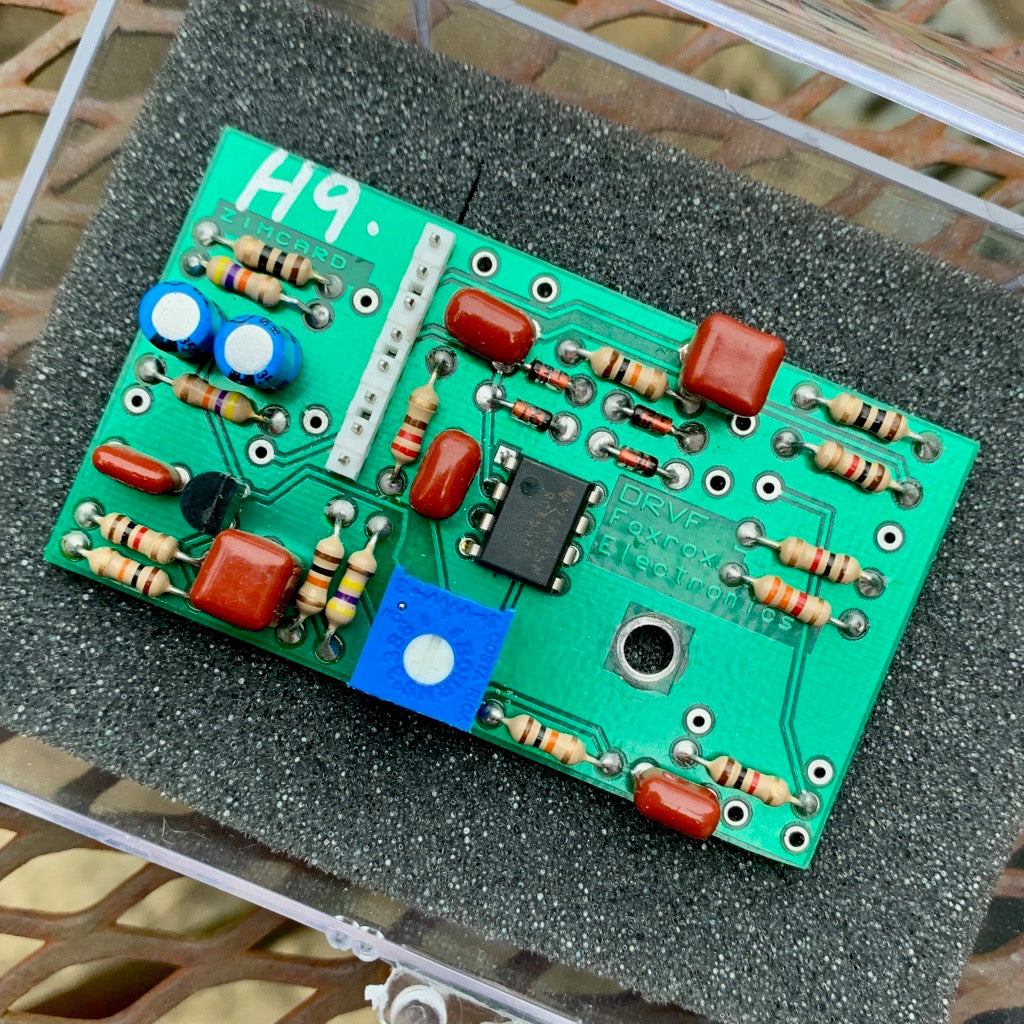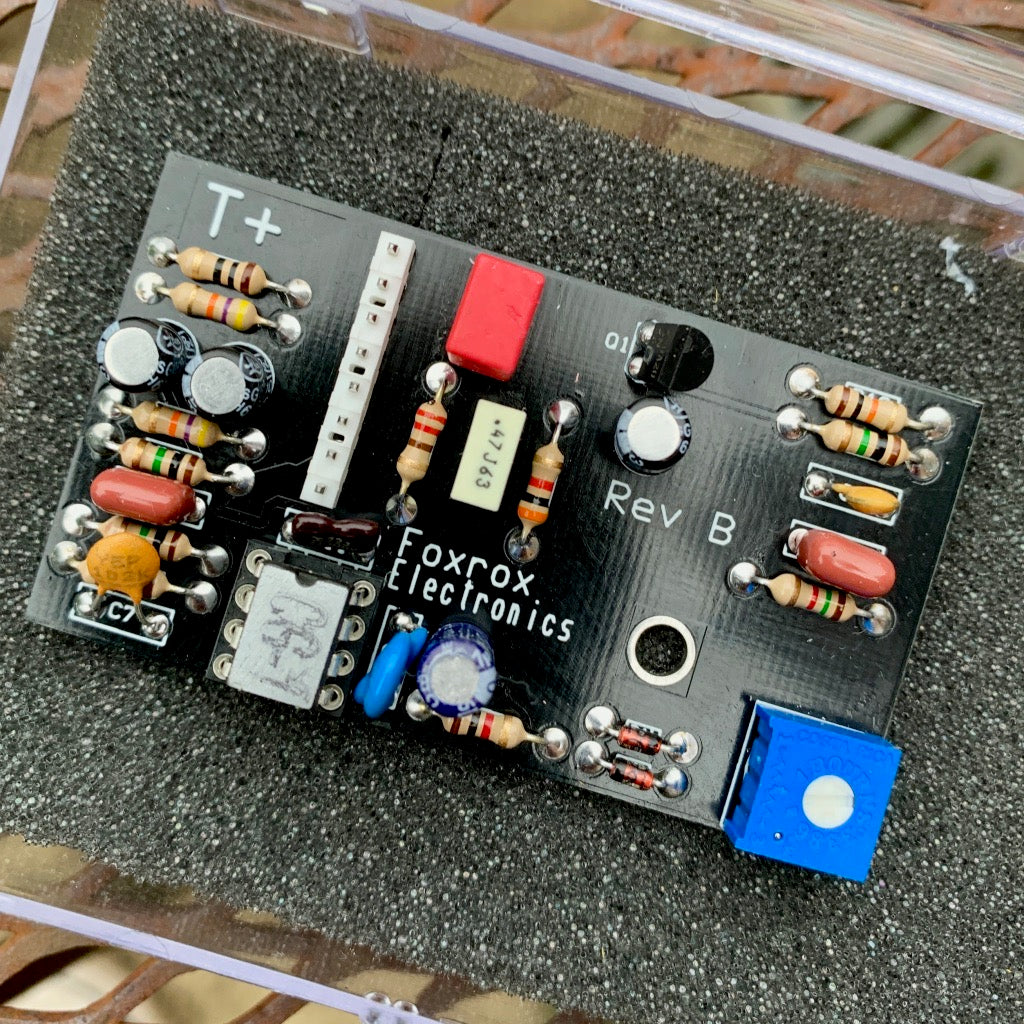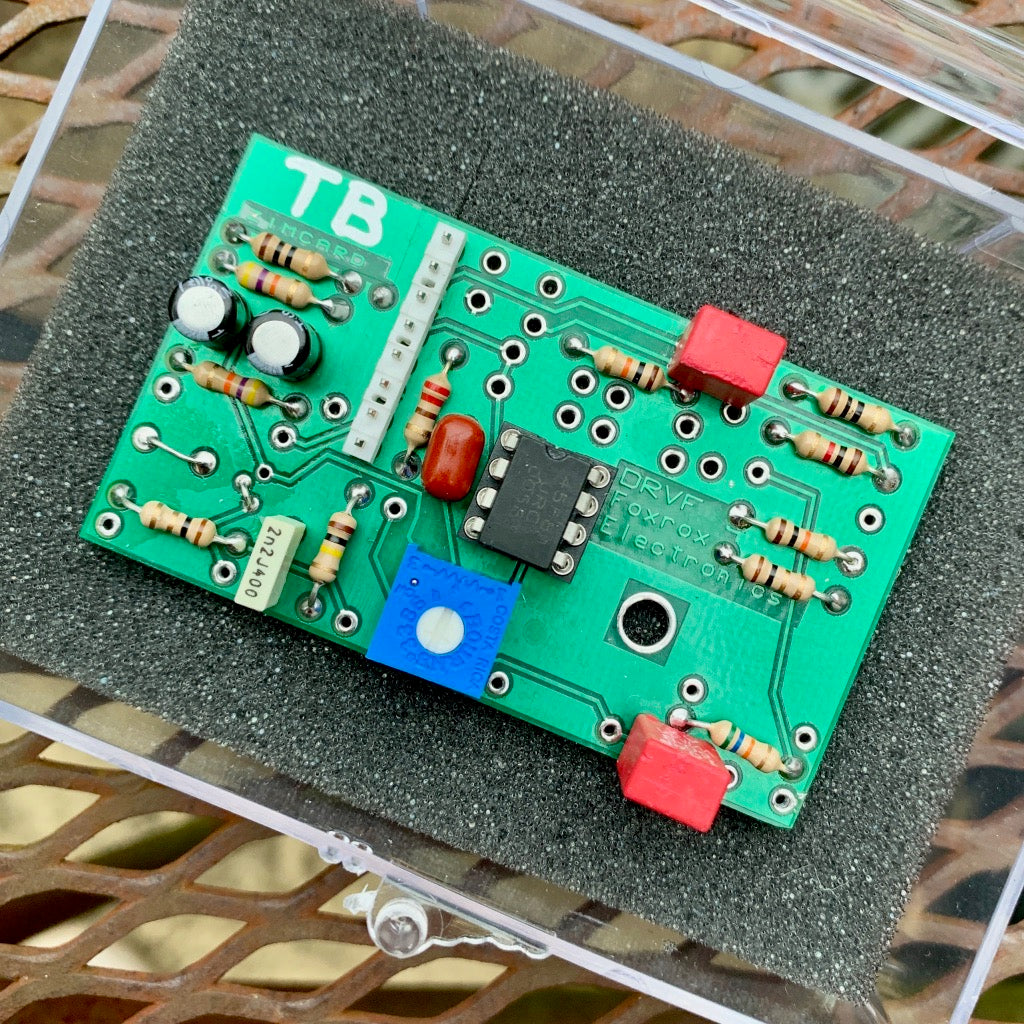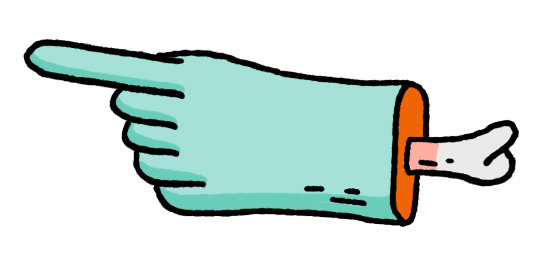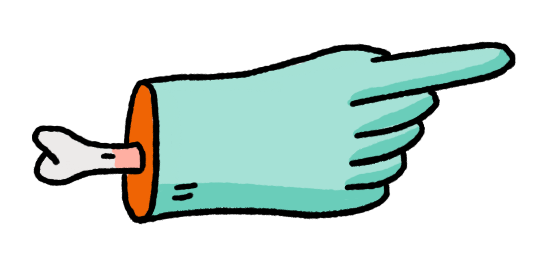Effect:
B9 ZIMcard has the parts values of a very popular 'boutique' tube screamer. More bass and more available gain range (.1uf / 3.3k, 1 meg gain pot w/ 10K series). Mid-hump is softened resulting in a more up-front sound. The clipping diodes include a 1N270 Germanium to make the clipping slightly asymmetrical. The circuit mods are the same as other successful TS clones and common upgrades.
Buffer Boost ZIMcard is a buffer/boost with adjustable tone color and slight saturation. The DRIVE knob takes you from a warm, slightly dark boost at the lowest setting, to a full-range clean boost around the middle settings, to a bright saturated boost when maxed out. BB can serve as a buffer, a booster, a tone control, and can add more break up to whatever is before or after it. It can also serve as a great clean buffer for your pedal board.
Brown Muff ZIMcard produces a great lead tone that falls somewhere in between Fuzz and distortion. It's ZIM's take on the Big Muff Pi. This is a modified version of the transistor muff. Silky smooth sustain and classic tone. Brown Muff really shines when used in the B channel of ZIM. It's rich tone and harmonics give the voicing circuit a lot to work with, creating endless vintage fuzz tones. Note: Due to the larger size of the BM ZIMcard, you can not use it in a Mini-ZIM with a 9-Volt battery. It fits fine with no battery installed.
Fat Fuzz ZIMcard is a new take on the vintage Dallas Arbiter circuit. It's a stable circuit that delivers the same fat attack and organic sustain of the classic Fuzz Face. Finally you can have a Fuzz that truly cuts through. Apply a Voice to Fat Fuzz and your Jimi leads will never be buried again. It includes a light overdrive stage which smooths out the sound. You won't get that "ice pick" sound that can happen when using a Fuzz through a clean amp. Circuit description - In order to put a FuzzFace circuit into ZIM, I had to change a couple of things. This is due to the values of the DRIVE and VOLUME controls. The Fat Fuzz ZIMcard consists of a medium gain Silicon NPN FuzzFace circuit followed by a mild overdrive stage and a tone control. The overdrive stage smooths out the tone and provides additional gain and clipping when the DRIVE knob is turned up. The tone control is on a blue trimmer. On the input side, all the rules that apply to a FuzzFace also apply to the FF ZIMcard. This means that you should avoid putting buffered effects before the Fat Fuzz, it will kill the authentic tone and create a lot of noise. Like a FuzzFace, the Fat Fuzz input wants to see your guitar pickups only. This way you can use your guitar volume knob to get an almost clean sound. Also, most wah pedals will interact just like they do with a FuzzFace - narrow range and oscillation.
H9 ZIMcard is currently the default for Channel B. A very high-fidelity and high-gain version of the TS circuit. Full bass, even mids, smooth top end. At low gain it's a great overdrive and at high gain it's in distortion territory. Double diode configuration in the clipping section enhances sonic clarity and low mids. H9 delivers the gain of a distortion with the voicing of an overdrive.
Red Octave ZIMcard is an octave-up effect working with the same basic principles used in the Tycobrahe Octavia, Foxx Tone Machine, and other analog octave doubler effects.
Red Octave differs from the rest in two ways.
